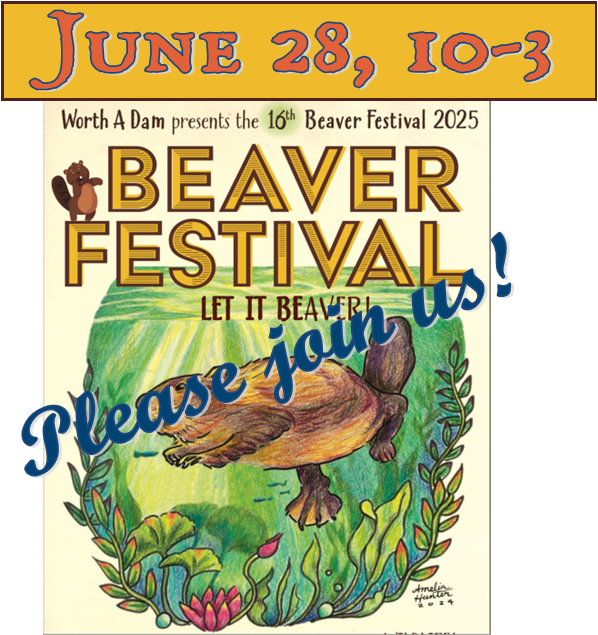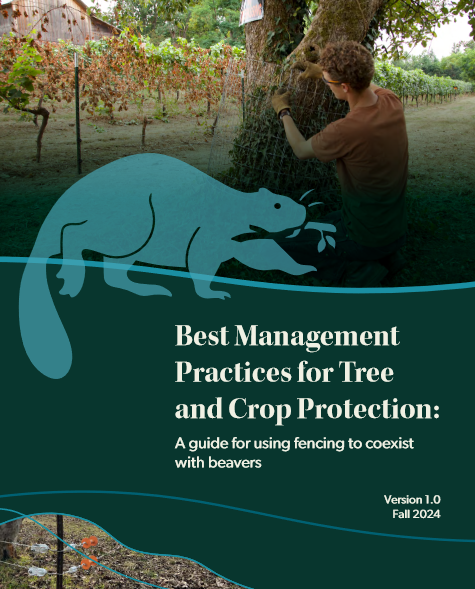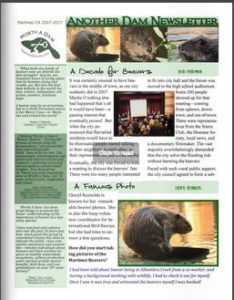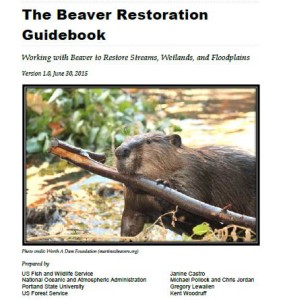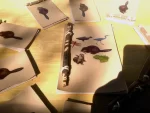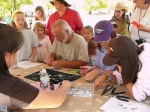Nice article in the Gazette might help nudge the mural forward….
Questions surround beavers as upcoming mural celebrates legacy
Although an alleged recent sighting of a lone beaver in Martinez might bring some hope for their return, it still seems no answers have been forthcoming regarding the sudden disappearance of the Alhambra Creek beaver colony late last year.
According to Heidi Perryman of Worth a Dam, a beaver was spotted near Creek Monkey Taphouse on February 18 by a Martinez resident. The sighting is the first reported since September of last year, around the time when several young beavers suddenly and inexplicably died in the Alhambra Creek. During that time several adult beavers also disappeared, leaving the creek void of beavers for months.
Perryman says the lone beaver is likely what is known as a “disperser,” a young beaver seeking territory to mark as his or her own. She explained that currently there is no evidence that the beaver decided to stay in the creek.
Months ago, the California Department of Fish and Game oversaw the necropsy performed on a young beaver at UC Davis, however tests were inconclusive. Disease, toxins, and some poisons were all ruled out as well.
While it seems no answers or progress have been made on determining the cause of the beaver deaths, Perryman and Worth a Dam are hoping to honor their legacy in Martinez.
Worth a Dam has been working with the city on a wildlife and beaver mural to adorn the cement surface of Marina Vista Bridge Wall. Back in November Perryman pitched the idea to the PRMCC of a mural located on the south facing side of the Marina Vista Bridge at Alhambra Creek.
“The beavers made a real impact on Martinez, and that’s something we want to capture with this mural,” said Perryman. She hopes the mural reminds people of the “living creek” that runs through the center of downtown Martinez.
The artist for the mural is Mario Alfaro, who has also worked on the Joe DiMaggio mural on the Main Street Plaza Bridge. The cost of the mural will be covered by Worth a Dam for a total of $6,000. The organization hopes to cover the cost with grants.
The art committee of the PRMCC approved the mural design, so the next steps come with the city council. Perryman noted that, because the city council meeting agenda is fully booked for the month of March, the project likely won’t be on the council agenda until April.
I’m always happy when accurate and positive information about the beavers and Worth A Dam is printed. Thanks, Joseph Bustos. You made the mural even more inevitable by linking it in the press to the loss of the beavers. Hopefully it will help nudge us a little farther along queue for getting on the Agenda for city council! Fingers crossed.
Imagine how surprised I was to come across this yesterday with the help of a friend. I don’t know how I missed it in the flurry of the holidays and retirement. But imagine how especially surprised I was to read the bold sentence from Dr. Michael Pollock himself;
Manmade Beaver Dams Save Fish
At Wenas Creek, they are putting in manmade beaver-dam analogues by pounding posts into the streambed and then weaving branches among them. A few workers can run a post pounder with biodegradable hydraulic fluid and achieve hydrological results similar to those of an imported-beaver colony. The result, says Tobin, is that, “fish and farms coexist in the same reach.”
The natural solution: beavers. In the past, “problem” beavers have been relocated to streams in need. Their dams back up the water, raising streambeds while still allowing passage for salmonids. The downside is that it costs money to trap beavers and house them prior to relocation, and despite the offer of seemingly ideal habitat, they sometimes leave. Besides, says Tobin, manager of the North Yakima Conservation District, “you can’t control where they’re backing up water.”
Enter Michael Pollock of the National Oceanic and Atmospheric Administration, who pioneered the idea of reinforcing blown-out beaver dams with posts. “That’s the best strategy, because they’ve already done all the work,” says Pollock. “We’re just reducing the dams’ failure rate.”
Pollock suggested dispensing with beavers altogether.
SACRILEGE! Some one hand me the smelling salts, I’m feeling faint. And tell me, how are repairs going to be made on those dams once injury occurs? Will a team of humans be living on sight just in case? Will they also dig in the mud to encourage invertebrates? And how will the trees coppice with no one to chew them?
Of course a sentence like that could NOT go unchallenged. So I sent him this last night:
With the exception of this aberrant infraction, he’s still mostly a good guy and at his heart a beaver believer. He quickly wrote back:
You are having way too much fun with your new found skills. 🙂
Which I confess, is wholly true. That was the most fun I had all week.













